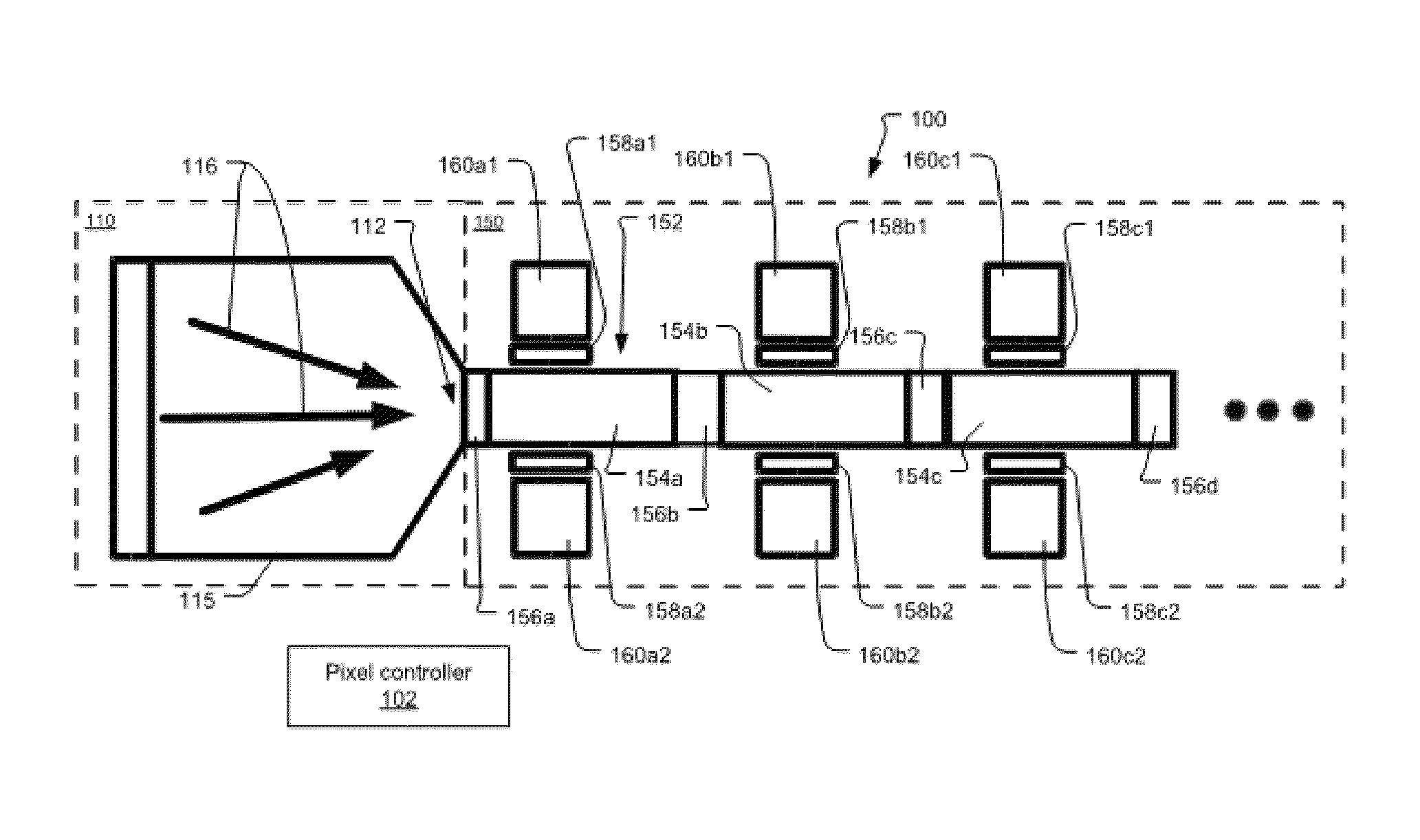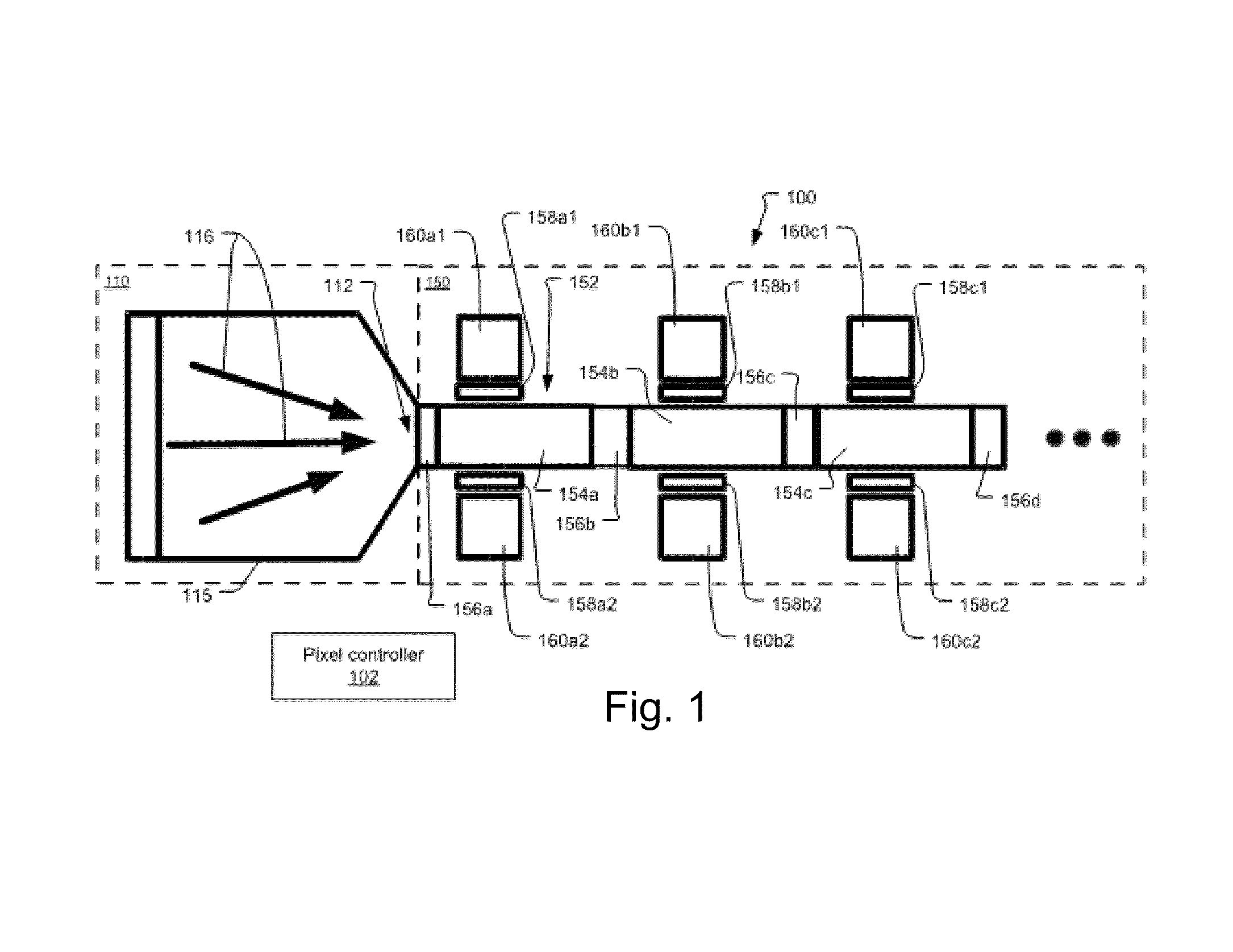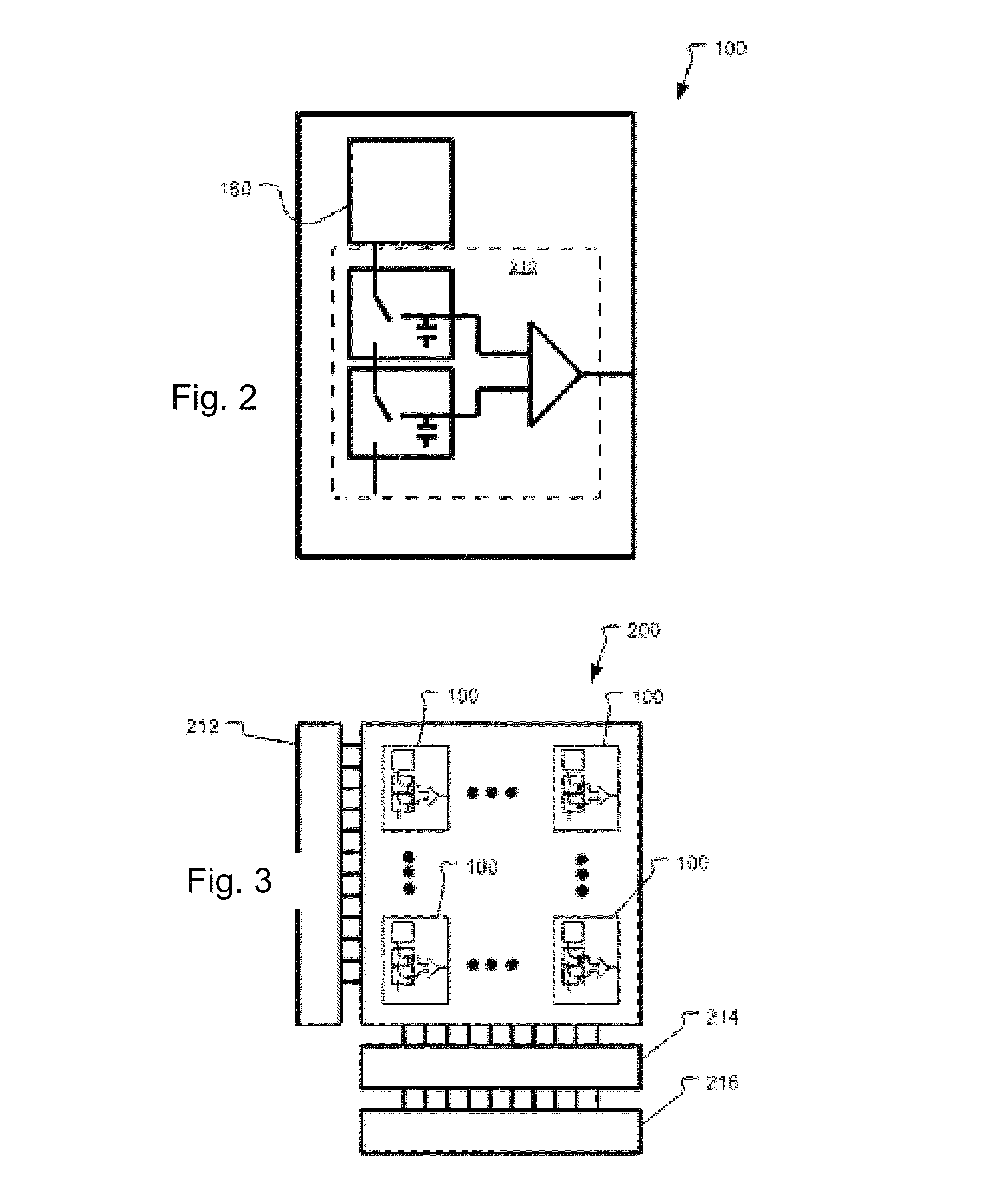Demodulation pixel with daisy chain charge storage sites and method of operation therefor
a technology of demodulation pixels and storage sites, applied in the field of demodulation pixels with daisy chain charge storage sites and methods of operation therefor, can solve the problems of insufficient space in the demodulation region to implement the design of more than, strong impede the implementation of demodulation pixels with more than two sampling storage sites, and mismatch between samples, etc., to achieve the effect of strong reduction of mismatch between samples
- Summary
- Abstract
- Description
- Claims
- Application Information
AI Technical Summary
Benefits of technology
Problems solved by technology
Method used
Image
Examples
Embodiment Construction
[0036]The following discussion concerns a sensor with a p-doped substrate in which electrons are the useful photo-generated charge carriers. All considerations can also be done for n-doped material, with holes as carriers of information. In this case the voltages applied to gates and / or diffusions would be reversed.
[0037]FIG. 1 shows a demodulation pixel 100 embodied in a semiconductor substrate that has been constructed according to the principals of the present invention.
[0038]The pixel 100 comprises a photosensitive region 110. This is typically characterized by a portion of the semiconductor substrate that receives incoming light or other radiation and is not otherwise shielded by opaque layers, such as metal, layers. The photosensitive region 110 has a photocharge transport area 115 that moves the photocharges to a pickup point 112, typically at one end of the transport area 115.
[0039]The photocharge transport area 115 transports the photocharges to the pickup point 112 typical...
PUM
 Login to View More
Login to View More Abstract
Description
Claims
Application Information
 Login to View More
Login to View More - R&D
- Intellectual Property
- Life Sciences
- Materials
- Tech Scout
- Unparalleled Data Quality
- Higher Quality Content
- 60% Fewer Hallucinations
Browse by: Latest US Patents, China's latest patents, Technical Efficacy Thesaurus, Application Domain, Technology Topic, Popular Technical Reports.
© 2025 PatSnap. All rights reserved.Legal|Privacy policy|Modern Slavery Act Transparency Statement|Sitemap|About US| Contact US: help@patsnap.com



